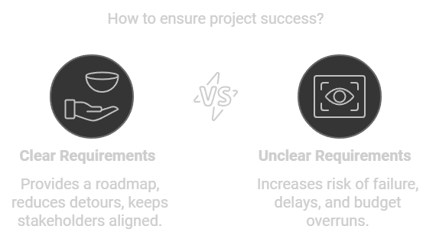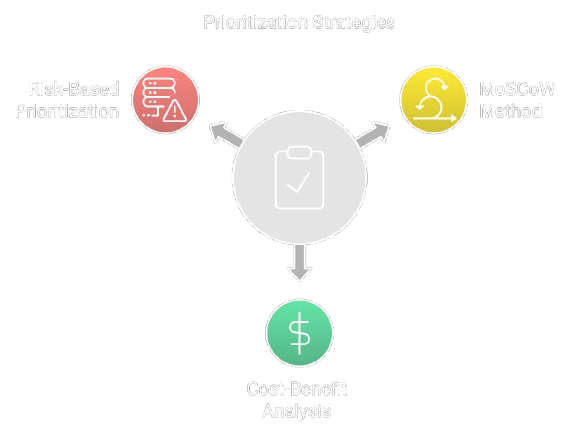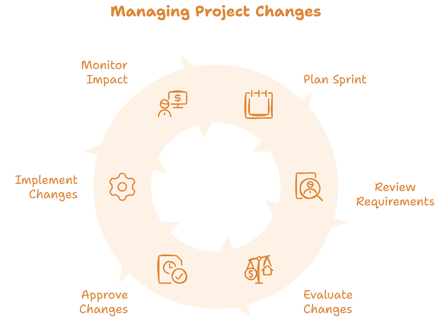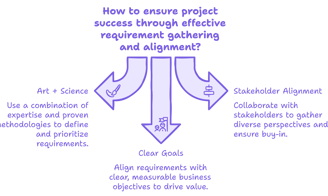The Business Analyst's Guide to Defining and Prioritizing Requirements
The Business Analyst's Guide to Defining and Prioritizing Requirements
As a Business Analyst, defining and prioritizing user requirements is not just a box to tick—it's the cornerstone of every successful project. Without well-structured requirements, projects can veer off course, leading to delays, misaligned goals, or even complete failure. Think of requirements as the blueprint of a house. 🏗️ Without one, the project risks turning into a costly guessing game.
In this guide, we’ll explore proven techniques for gathering, documenting, and prioritizing requirements. More importantly, we’ll ensure that these requirements are not only well-defined but also aligned with overarching business objectives. After all, the ultimate goal is delivering value to the organization.
Why Getting Requirements Right is Critical 📌
Let’s start with the obvious: unclear or incomplete requirements are the root cause of many project failures. According to numerous studies, poor requirement management is often cited as one of the top reasons projects go over budget or miss deadlines. When requirements are poorly defined, it’s like trying to navigate without a map—you might get there eventually, but not without significant detours.
Well-defined requirements help keep stakeholders, developers, and project managers on the same page. They serve as the foundation for making critical decisions and help ensure that the project stays aligned with its objectives.
Techniques for Gathering Requirements (Method to the Madness) 🧩
Requirements gathering can sometimes feel overwhelming. Stakeholders have varied needs, and translating those needs into actionable requirements is no small feat. But fear not! Here are a few tried-and-tested techniques to help you collect what you need without losing sight of the bigger picture.
Interviews
One of the most common methods for gathering requirements is through interviews with stakeholders. However, it’s important to ask the right questions—not just what they need, but why. For example, instead of asking, “What system feature do you need?” ask, “What business problem are you trying to solve?” Understanding the reasoning behind the request provides clarity that leads to better solutions.Workshops
Bringing stakeholders together for a workshop is a great way to foster collaboration and gather insights. Workshops are particularly effective when you need to understand requirements from different departments or teams. Engaging stakeholders in discussions allows you to refine requirements in real-time.Observation
Sometimes, stakeholders might not be able to fully articulate their needs. In such cases, observing how they interact with current systems and processes can provide valuable insights. By watching their workflow in action, you may uncover gaps or inefficiencies that they weren’t aware of.Prototyping
Creating prototypes or wireframes helps stakeholders visualize what the end product will look like. This method is especially useful in projects involving user interfaces or customer-facing applications. By giving stakeholders a sneak peek, you can elicit more meaningful feedback.
Writing Clear Requirements (Precision is Key)
Once you've gathered the requirements, the next challenge is to document them clearly. Ambiguity is the enemy of good requirements. A vague requirement can lead to misinterpretation, which in turn can lead to costly rework or misunderstandings down the road.
Be Specific: Requirements should be measurable and concrete. For example, instead of writing “The system should load quickly,” say, “The system should load within 3 seconds.” This leaves no room for subjective interpretation.
Use Standard Templates: Using standard templates like a Business Requirements Document (BRD) or Functional Requirements Document (FRD) helps maintain consistency. Templates ensure that all necessary elements are covered and provide structure to your requirements gathering process.
Review and Validate: Always review requirements with stakeholders before moving forward. By validating with the people who provided input, you ensure that what’s been captured is accurate and aligned with their expectations.
Prioritizing Requirements (Not Everything is Mission-Critical) 🎯
After gathering your list of requirements, the next step is prioritization. It’s essential to remember that not all requirements hold equal weight. Some are critical to the project’s success, while others are "nice-to-haves." Here are some effective methods for prioritizing requirements:
MoSCoW Method
The MoSCoW framework divides requirements into four categories: Must-Have, Should-Have, Could-Have, and Won’t-Have (for now). This method helps you focus on the most critical features while ensuring that non-essential elements don’t derail your progress.Cost-Benefit Analysis
Evaluate each requirement in terms of the effort or cost involved versus the value it provides. High-value, low-effort items should naturally rise to the top of your priority list. This method ensures that resources are allocated to the tasks that deliver the most impact.Risk-Based Prioritization
In some cases, high-risk areas might need to be addressed earlier in the project. By dealing with potential problem areas upfront, you can mitigate issues before they become major roadblocks.




Aligning Requirements with Business Objectives (The Big Picture) 📈
A critical part of your job as a Business Analyst is ensuring that every requirement ties back to the organization’s larger goals. Misaligned requirements not only waste resources but also dilute the impact of the project.
Understand Strategic Goals: Before you start defining requirements, take time to fully understand the company's strategic goals. How does this project fit into the larger picture? Does it support growth, operational efficiency, or customer satisfaction? Every requirement should have a clear link to these objectives.
Frame Requirements in Business Terms: When presenting requirements to stakeholders, always tie them to business outcomes. For example, instead of simply stating, “We need a new CRM system,” say, “A new CRM system will improve customer retention by 15% over the next quarter.” This helps justify why certain features or functionalities are necessary.
In Conclusion: Requirements Drive Success
Defining and prioritizing requirements is both an art and a science. The right approach can significantly impact a project’s success, ensuring that everyone from stakeholders to developers—is aligned and focused on what truly matters. 🎯
By mastering techniques for gathering clear, actionable requirements and aligning them with broader business goals, you’re setting the stage for a project that not only meets expectations but also drives real value for the organization.
Managing Changing Requirements Without Chaos 🛠️
Let’s face it: requirements change. The key is to manage these changes in a way that doesn’t disrupt the entire project. Having a well-defined process for handling changes ensures that your project remains flexible, yet controlled.
Agile Methodology: If you’re working in an Agile environment, change is expected. Agile’s iterative nature allows teams to review and adjust requirements after every sprint. This makes it easier to accommodate evolving needs without derailing the project timeline.
Effective Change Control: Implement a structured process for evaluating and approving changes. This could involve impact analysis to understand how a change might affect project scope, timelines, or costs. By maintaining a formal process, you avoid knee-jerk reactions that could lead to scope creep.




